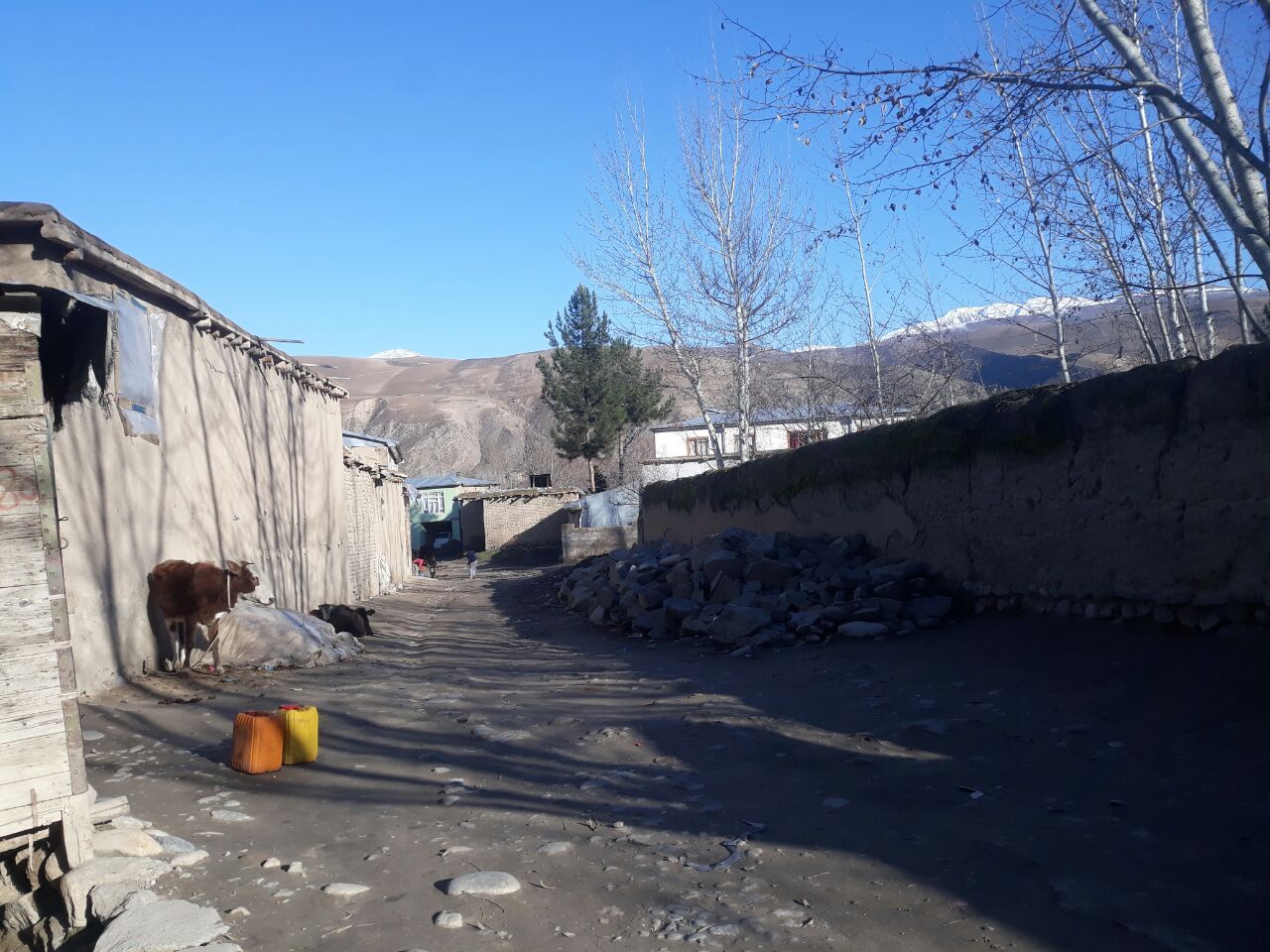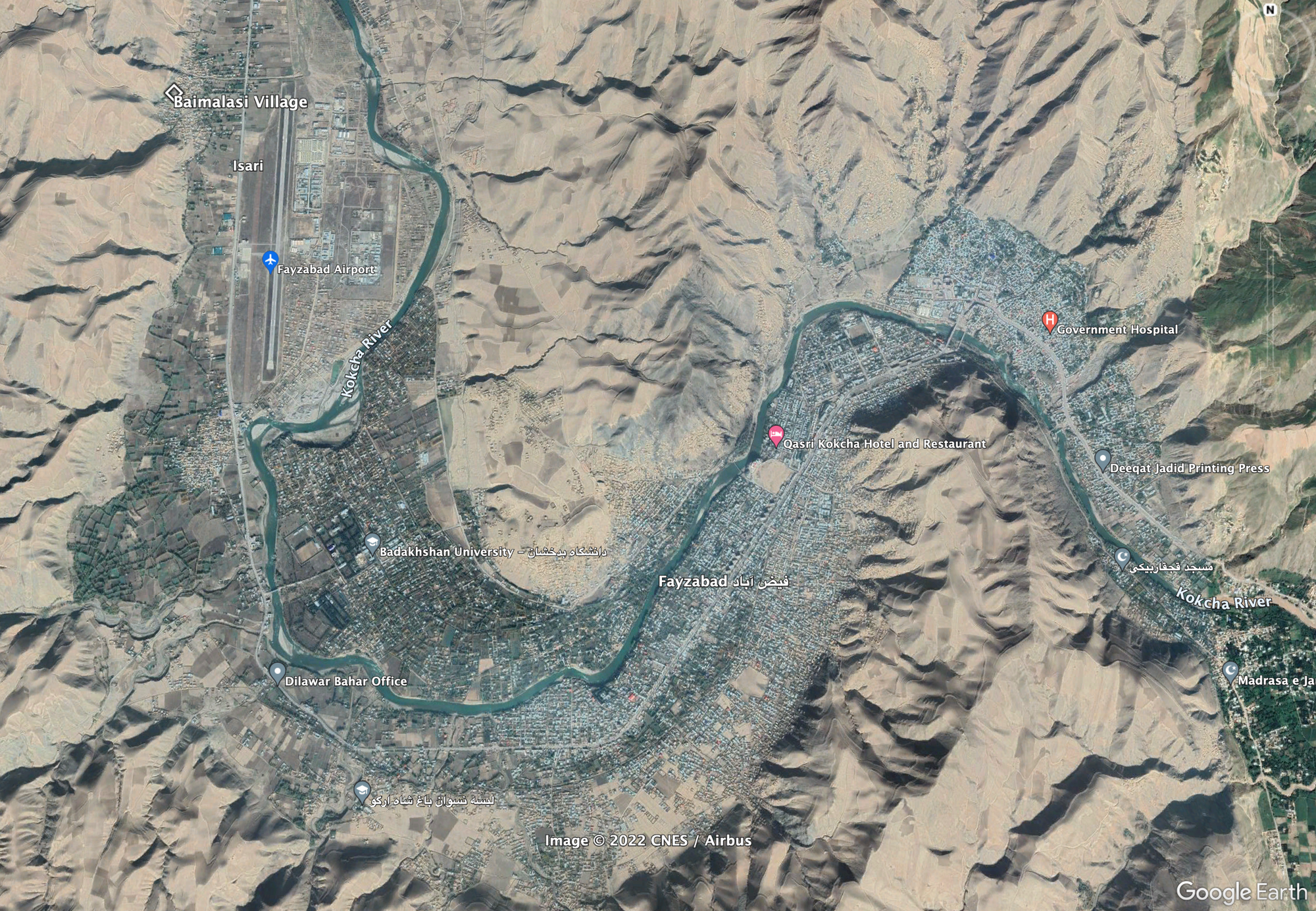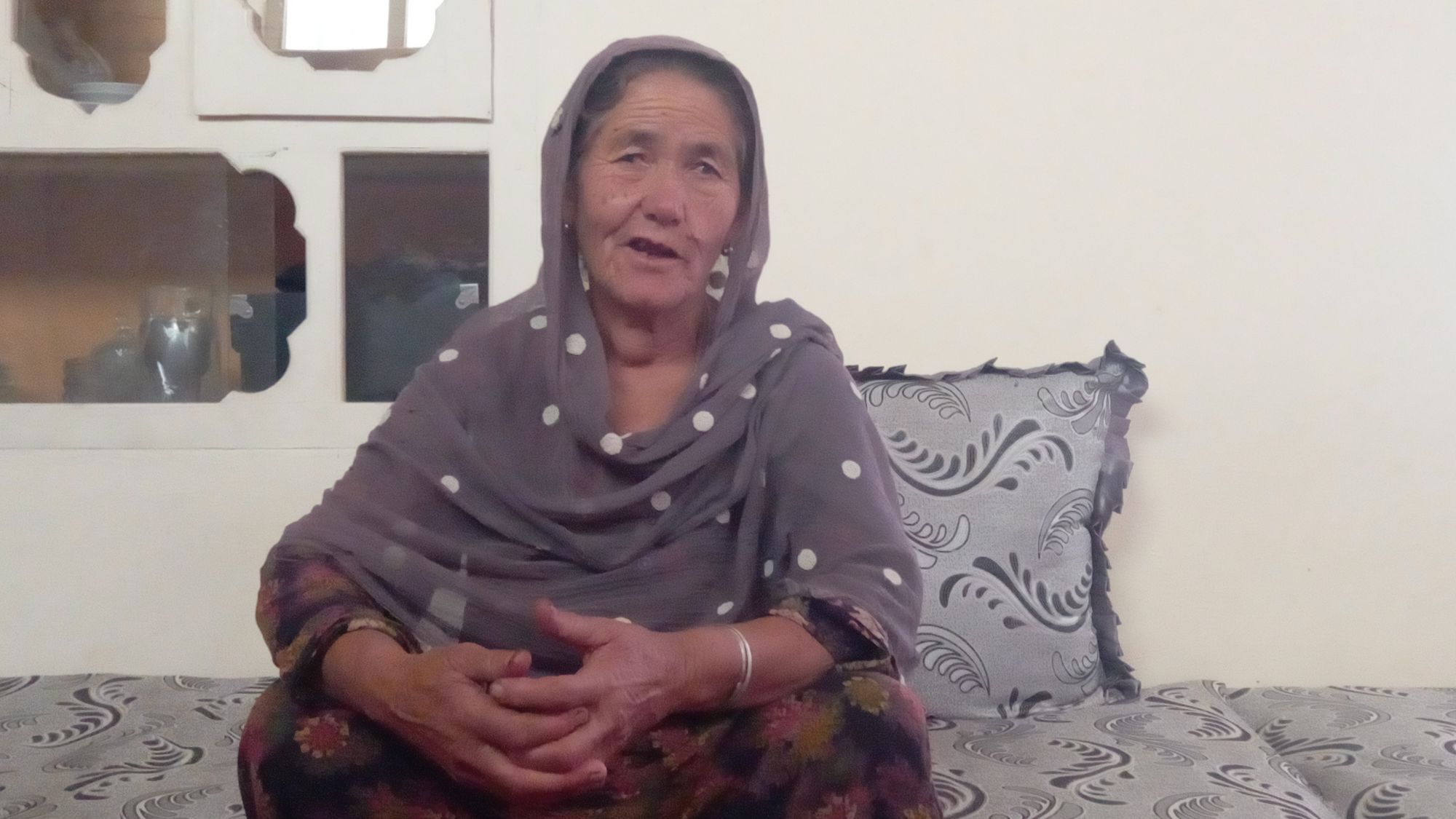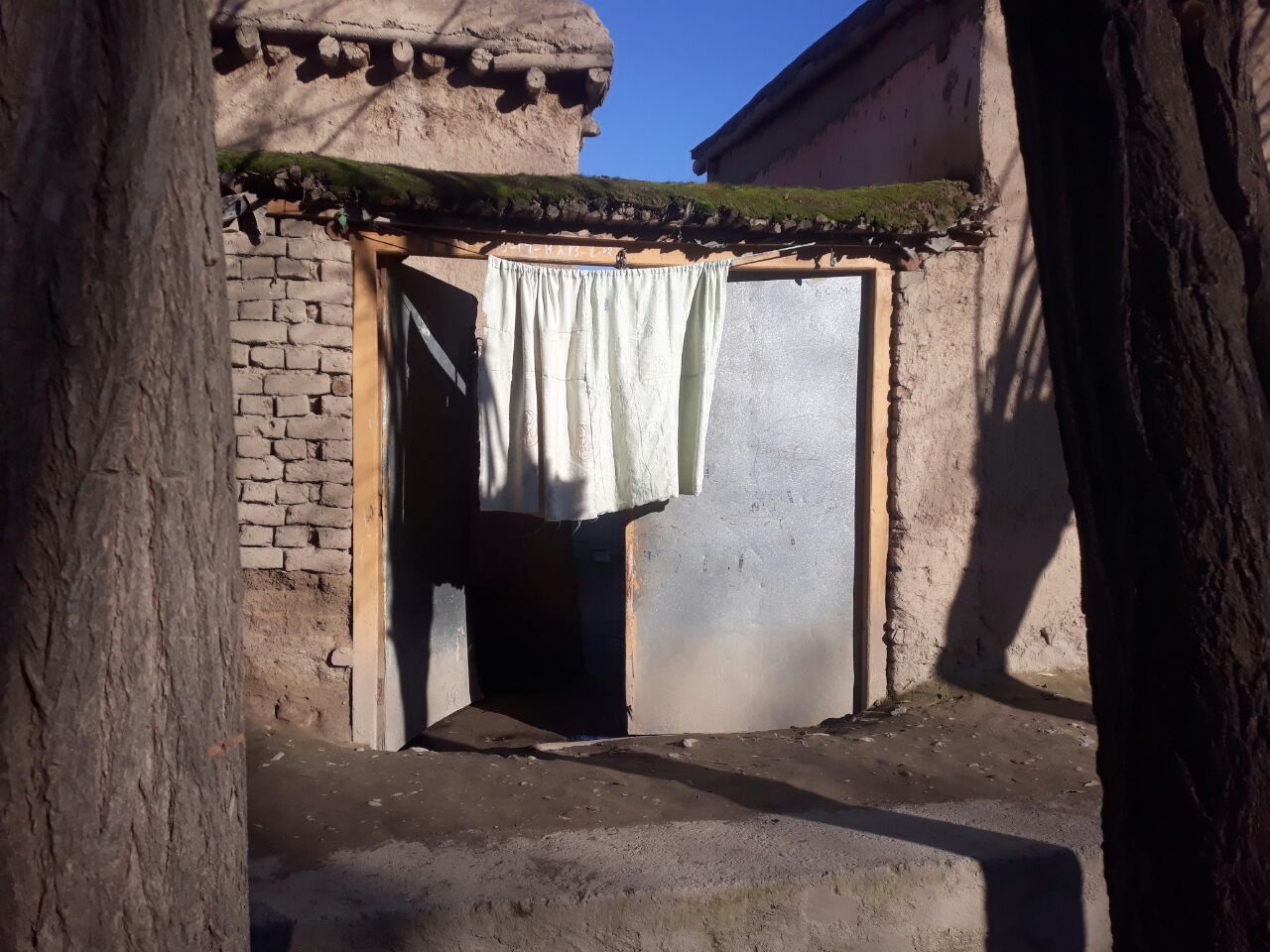A Midwife with 40 Grandchildren
In Badakhshan, where experience still rules over formal education, Alim Nesa has served her community as a home-based #midwife for the last 30 years.

— One Day in Afghanistan —
Written by Shabana Farahmand
BAIMALASI, BADAKHSHAN — 70 year-old Alim Nesa has served the women of northeastern Afghanistan’s Badakhshan province as a midwife for the last 30 years. In her small village she is well-known for helping women give birth–despite not being a physician or having any formal education in the field. Like many midwives in rural Afghanistan Ms. Nesa is a woman of experience.
Ms. Nesa considers her job a “sacred responsibility,” and enjoys helping women give birth. She tells me, “God has given us two hands so we can use one to help others!”
Unlike developed countries where midwives have grown in popularity, in Afghanistan “Home-based midwives” or [Daya, Qabila-e Khanagi”], are mostly women who have acquired their skills through experience rather than a formal education.
In today’s One Day in Afghanistan episode, Shabana Farahmand documents Alim Nesa’s journey as a midwife by spending a day with her.
It is 8 in the morning when I leave Faizabad, Badakhshan’s capital towards Baimalasi, a village on the outskirts of the capital city, about half an hour's drive. After we arrive in Baimalasi it takes me another hour to find Alim Nesa’s house. I knock on the door and there is a brief wait before the door opens, revealing an old lady with wrinkles across her face who invites me inside. Her home is big, with a large front yard and several structures built from mud but they are very organized, demonstrating the homeowner’s taste.
As we enter Alim Nesa’s home, I scan the walls to see what they reveal about my subject.. Once inside, I realize the kind lady and I are alone. Our conversation begins with some details about her family. Alim Nesa has five children, two boys and three girls.

Both of Alima Nesa’s sons were servedAfghanistan’s previous government, as soldiers stationed across the country, one in southern Helmand and the other in western Herat. They both left for Iran following the collapse of the previous government in August of 2021. Two of her daughters were married off and live elsewhere.
Alim Nesa offers me some tea with sweets at 10 am. Listening to Ms. Nesa recounting the hard and distressing life she has lived leaves me feeling bitter. Ms. Nesa was married when she was just 12 years old.
“My father forced me to marry when I was a child. As the saying goes, I couldn’t even differentiate between my right hand and my left, didn’t know anything about household chores and used to play around all day,” Alim Nesa says, adding that, “I was the most loved and only girl in my family, not knowing anything about husbands, responsibility or living as a couple. I only found out after I was married.”
Alim Nesa continues, “People used to force their children to marry at a very young age. I was also a victim of this unjust and absurd tradition. Following that tradition, my father also agreed to marry me off at a very young age.”
“After being married [I lived in a room with] no windows, no door, and was nearly empty. My husband taught me how to cook. He was a migrant farmer. During the summers, we used to sleep in kapas we built at the farms he was working on to keep an eye on the harvest. That was during the war between the Russians and the Mujahideen.” Kapas are shelters made of bamboo and shrubs.
In addition to being subjected to these patriarchal social norms, Alim Nesa experienced the violent political history of Afghanistan first-hand.
“One night three rockets hit our kapa, injuring my head, face, hands and legs. I lost a lot of blood, there was a hole in my leg, and I couldn’t hear properly. I was in a coma for five days and in the hospital for four months,” Alim Nesa tells Alive in Afghanistan.
According to her, the hearing in one of her ears has gotten worse. “If you don’t hear, it’s like having nothing in life. Humans live by their eyes, ears, arms and legs. We must appreciate the value of good health, as it’s the biggest blessing given to us by God.”
Alim Nesa’s children all finished high school but didn’t continue their education. According to Ms. Nesa this was mainly due to financial constraints. Alim married off two of her oldest daughters after high school because “It was better for them to get married.”

Once married, her daughters were not allowed to study further. Although Nesa is eager to let her youngest daughter continue her education, “Currently I don’t have the ability to provide that opportunity for her.”
“I feel like she might say goodbye to her dreams and get married as her father can no longer work and I can only provide food for my family with what I make through being a midwife,” Alim Nesa says.
According to her, one of her married daughters and her family live with Alim Nesa as well. Her daughter’s husband was a farm worker whose legs stopped working eight years ago. After becoming disabled, he could no longer support his family, which forced him to move in with his mother-in-law.
“My mother was a midwife. She used to take me with her when called to help so I could learn. I learned from my mother. I helped a neighbor give birth when I was 25. I was excited and scared considering the well-being of the mother and child. The lives of two human beings were on the line so I was extra careful. After a successful birth, I was motivated and helping women give birth became normal to me.”
“Home births do not require a lot of equipment. The only things required are thread, razor blades, cotton and bandages. The thread and razor are for cutting the umbilical cord and the cotton and bandages are to prevent the belly button from bleeding,” Alim Nesa says.
Midwife-assisted childbirth continues in villages across rural Badakhshan despite the presence of 115 health centers, including three hospitals, and five advanced medical centers currently operating across the province. Meanwhile, hundreds of women and girls in the province are studying and/or have completed midwifery and nursing education over the past 20 years.
But educated, professional midwives and nurses have failed to replace those trained by traditional methods. Villages and rural Badakhshan areas, like the rest of Afghanistan, have historically been deprived of access to proper health facilities. Health clinics located in rural areas often lack qualified staff including childbirth specialists.
The call for afternoon prayers ring while I passionately listen to Alim Nesa. Lunch, a simple serving of yogurt with homemade bread, is served after we finish prayers.
After lunch at around 1:30 in the afternoon, Alim Nesa continues recounting her life story. She has no customers today, but when she does, someone from the family notifies her a day before the baby is born.
Alim Nesa’s stories reflect the tradition and superstition still observed in Afghanistan. Some of the actions performed during birth are traditions that clearly indicate the unethical and unscientific medical practices by local midwives.

“I lift the mother up while holding her hand before childbirth. I put some vaseline on her abdomen and back, and burn some wild rue in the room,” Alim Nesa says. Different cultures burn wild rue to fend off evil spirits.
Alim Nesa describes the requirements on her during childbirth, saying, “I jump out of the window if a child is late. I believe jumping from the window helps the child be born easier. An easy jump means an easy birth.”
The major part of the job is done once the child is born, Alim Nesa’s next responsibility is to care for both the mother and the child. One of her methods is giving the mother ‘chil-giah’ literally meaning ‘forty-herbs’. According to Alim Nesa, “If the mother is scared of the pain after childbirth, the chil-daru is given to her to get rid of that fear.”
“If the mother needs an injection or an IV, I order and administer it myself. If the mother is facing a serious problem, I refer her to a clinic,” Alima Nesa says, adding, “I wash and clean the baby and mother after birth, dress the baby and put them in cotton. I dress the mother, wrap her head in a scarf so she doesn’t get cold and then hand her baby to her.”
Alim Nesa is paid 1,000 Afghanis for each birth she attends ($11.50 at the current exchange rate), in addition to a new set of clothes and a bar of soap. Although Alim Nesa’s income is meager, she takes pride in her services and considers every child she has assisted at birth as her “grandchild.”
“I currently have more than 40 grandchildren, only one of those children was born disabled back when I started working as a midwife. All my other grandchildren were born healthy,” Alim Nesa recounts.
Both of us are deep in conversation until around 2 in the afternoon when a tall, brown-eyed woman wearing a dark red dress and black scarf enters the room. 33 year-old Tuba has two children, a boy and a girl, both of whom were born with Alim Nesa’s help. Tuba is currently seven months pregnant and is spotting/bleeding. She feels tired and is worried.
Alim Nesa calmly tells Tuba, “Some women bleed during pregnancy, there is nothing to worry about! I was spotting when I was pregnant with my second child but he was born healthy and normal.”
“Keep yourself warm, rest for a few weeks, don’t walk at all and avoid work. Cook and eat Gerdaw,” Alim Nesa says to Tuba. Gerdaw/Letee is an Afghan soup made of flour, turmeric, and sugar with the consistency of crepe batter. It is traditionally given to mothers following childbirth. According to Alim Nesa, the soup helps raise the body temperature, keeps the mother warm, and is good for easing stomach aches, and muscle cramps.
“Eat lots of Gerdaw during pregnancy!” Alim Nesa tells Tuba. Tuba thanks Alim Nesa, saying she appreciates her hard work going on to describe her as a, “Kind, hardworking, and strong woman.”

Although Alim Nesa’s knowledge is based on her experience, she is appreciated by her community. She says members of the community take her along even if they have to go to the hospital. Alim Nesa says, “Doctors and nurses are inattentive towards their patients, lacking care for them at hospitals.”
According to Alim Nesa, this fact has discouraged the public from believing in modern medical science. Alim Nesa justifies at-home child births due the low quality of healthcare provided in clinics and hospitals. She believes the facilities are only concerned with maximizing their profits, adding that, “Based on these reasons, it’s better to give birth at home. Experience therefore serves better for childbirth!”
Alim Nesa only prefers hospitals for childbirth if women are facing blood loss or another serious complication during birth that cannot be solved without the use of modern medical equipment.
